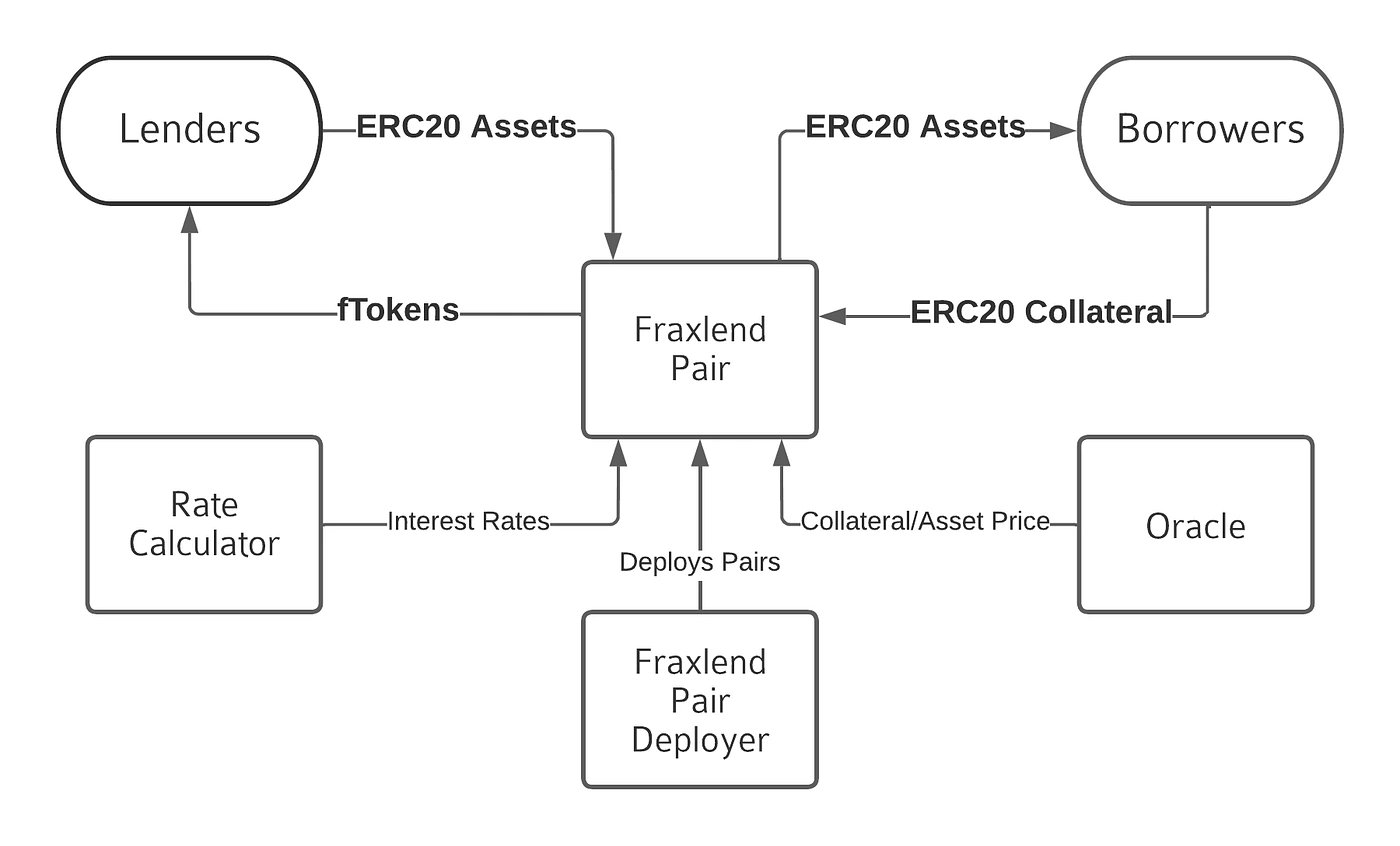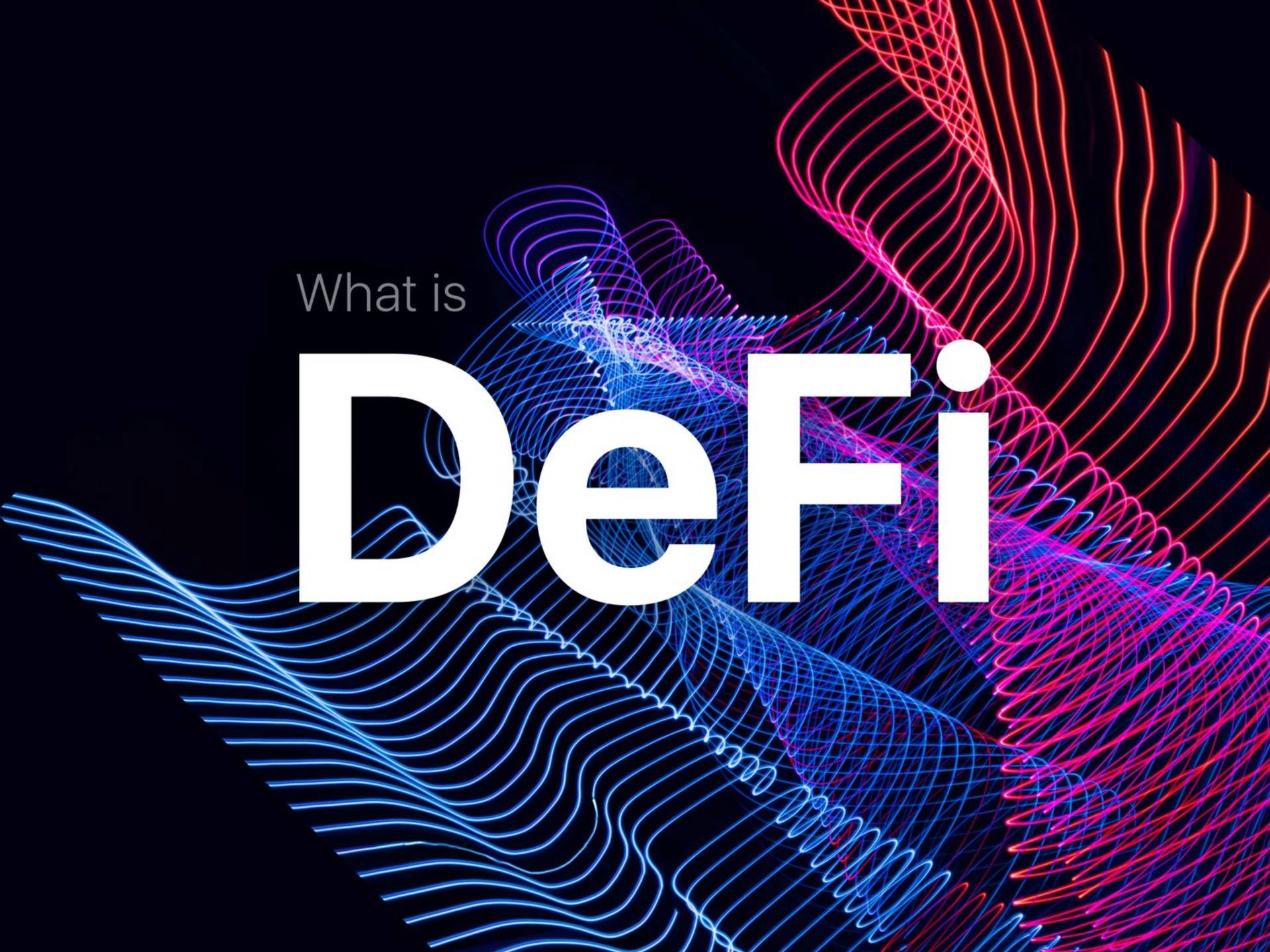订阅 wiki
Share wiki
Bookmark
Decentralized Finance (DeFi)
Decentralized Finance (DeFi)
去中心化金融 (DeFi) 是指去中心化金融系统的概念,该系统提供开放和去中心化的替代方案,以取代封闭的中心化金融系统。DeFi dapp 和协议使用 区块链 和 智能合约 等技术,以更透明的方式提供金融服务,并减少中间商。[\ 1][\ 2][\ 3]
概述
DeFi(去中心化金融)通常指的是建立在区块链上的数字资产、协议和去中心化应用程序(dApps)。[4] DeFi 是一种没有中心机构的金融服务。它涉及将传统金融系统的要素用智能合约取代中间人。[5]
大多数 DeFi 协议在 以太坊 区块链上运行,但也有一些已迁移到其他竞争区块链以获得更高的可扩展性。[6][7]
DeFi 利用了归属于 以太坊 的所有属性:
- 无需许可:任何人都可以访问所有 DeFi 服务,无需第三方参与。用户无需寻求许可即可与智能合约交互。
- 抗审查:任何人不会因为任何识别特征(如国籍、性别或政治信仰)而被限制使用 DeFi 服务。
- 可编程:任何可以编码到智能合约中的服务都可以作为 DeFi 服务引入。
- 透明:所有智能合约都可用于分析和验证。此外,所有用户交互都可以被跟踪,使 DeFi 完全透明。
- 可组合性:DeFi 服务可以相互利用以创建新的产品和服务。
- 无需信任:与智能合约的所有交易和交互都在账本上可见,并由底层区块链保护。[32]
历史
Inception (2017-2018)
DeFi 术语是在 2018 年 8 月 Ethereum 开发者和企业家(包括 Set Protocol 的联合创始人 Inje Yeo、0x 的 Blake Henderson 和 Dharma 的 Brendan Forster)之间的 Telegram 聊天中创建的。他们试图为在以太坊上构建的开放金融应用程序运动寻找名称。除了“DeFi”之外,考虑的其他选项包括 Open Horizon、Lattice Network 和 Open Financial Protocols。[33] 最终,聊天成员提出了 DeFi。[8]
此后不久,2018 年 10 月 4 日,该小组与 Dharma Protocol、0x Project、Coinbase、Abacus Protocol 等合作,在旧金山举行了第一次 DeFi 峰会。自第一次峰会以来,已在全球举办了数百场会议。此外,DeFi Telegram 呈指数级增长。[9][10]
增长 (2018-2022)
随着社区的增长,DeFi协议的价值增长迅速。2018年7月,DeFi协议的估值为1.81亿美元。几乎整整一年后,其总价值突破5亿美元。除了这个里程碑之外,DeFi开始看到协议持有地的多样化,因为MakerDAO此前在2018年12月持有超过91%的DeFi价值,并在同年7月将其份额降低了20%。[11]
2020年2月7日,DeFi的价值进入了十亿美元的里程碑。DTC Capital的Spencer Noon在一份声明中说:
在开发者思维、工具和基础设施方面,没有其他智能合约平台能与之匹敌,以至于我认为DeFi今天不可能在其他地方存在。也许最令人惊讶的是,我们终于看到了ETH作为去中心化金融中唯一真正无需信任的抵押品类型,可以获得长期货币溢价的可信案例。[12]
不久之后,总锁定价值出现下跌,并在2020年6月初迅速回到十亿美元的里程碑。增长的主要贡献者是开始出现在市场上的DeFi治理代币。DeFi世界看到了来自Compound、Balancer、UMA、Curve Finance和pNetwork等公司的原生治理代币的推出,这些代币可以通过协议使用获得。[13][14]
因此,具有治理的协议的总锁定价值(TVL)开始出现快速的流动性增长。[15]
大约在2020年5月初,比特币通过WBTC进入DeFi生态系统,因为它被添加到MakerDAO的平台,并附带0%的美元硬币稳定费。RenVM是一个用于将比特币、比特币现金和Zcash 铸造成ERC20代币的平台,该平台已启动。该平台的推出促进了价值的增长,因为比特币持有者能够在“DeFi领域”中使用他们的数字资产。另一个促进增长的主要推出是dYdX推出的永续合约,其第一个产品是能够在以太坊上以高达10倍的杠杆交易BTC-USDC。对比特币期货日益增长的兴趣产生了多米诺骨牌效应,增加了DeFi的总锁定价值增长。[16][17][18]
总锁定价值的增加也归因于以太坊合并的推出,该合并于2020年7月启动了第一阶段。包括去中心化保险协议Nexus Mutual在内的公司表示有兴趣将其当前资产的大部分质押到Eth 2.0中。投资者希望权益证明(PoS)的推出将为那些质押的人提供“验证区块”的奖励。[19][20][21]
除了对以太坊和Eth 2.0的未来充满信心之外,以太坊网络开始达到流量的历史新高。因此,DeFi资产的数量呈指数级增长,甚至在2020年4月至5月之间资产持有量翻了一番,首次达到1,000,用户超过550,000。此外,DeFi和稳定币中的平均交易费用创下2年新高,仅在2020年5月就花费了约2.56美元的以太坊gas费用。DeFi平台中的总锁定价值(TVL)在2020年8月超过50亿美元。自2020年6月初达到10亿美元以来,仅在60天内就增长了5倍。[23][24][25]
根据数据分析网站DeFi Pulse的数据,截至2020年8月16日,创纪录的60亿美元的加密货币被锁定在DeFi 智能合约中。MakerDAO、Aave和Curve Finance领先,它们之间锁定了约42亿美元。[26]
截至2021年3月,DeFi的总锁定价值(TVL)从约250亿美元增加到近1000亿美元。凭借大量的消费者成功,DeFi开始将机构采用作为其下一个目标。[27]
2021年12月2日,DeFi的总锁定价值(TVL)创下2560亿美元的历史新高。2022年4月3日,DeFi的总锁定价值(TVL)降至2310亿美元,因为它开始进入熊市。截至2022年9月,DeFi的总锁定价值(TVL)约为549.5亿美元。自2022年3月29日以来,TVL在五个多月内没有这么低过。[29][31]
整合期 (2023年至今)
虽然早期的快速增长已经放缓,但DeFi正在进入一个更加稳定和可持续的阶段,为更广泛的采用和融入传统金融体系奠定基础。自2022年以来的这段时期具有以下特点:
- 市场调整和整合: 2022年剧烈的市场下跌迫使许多DeFi项目重新评估其模式,并专注于可持续性。投机性较弱、更注重实用性的项目获得了突出地位。
- 监管审查: 监管兴趣的增加导致DeFi平台采取更加谨慎的态度,更加注重合规和风险管理。
- 机构采用: 尽管市场波动,机构投资者对DeFi的兴趣日益浓厚,推动市场环境更加成熟和稳定。
- 技术进步: 底层技术不断发展,重点关注可扩展性、互操作性和安全性。
- 应用场景扩展: DeFi正在超越简单的借贷,在保险、衍生品和支付等领域涌现出新的应用场景。
2024年3月5日,DeFi的TVL达到1013.6亿美元,其中借贷占326.2亿美元(32.2%),去中心化交易所占199.7亿美元(19.7%),抵押债务头寸占122.2亿美元(12%),重新质押活动占100.6亿美元(9.9%)。[38]
用例
去中心化交易所 (DEX)
去中心化交易所通常建立在不同的区块链之上,使其兼容性特定于其开发的技术。例如,建立在以太坊区块链上的 DEX 促进了建立在以太坊上的资产(如 ERC-20 代币)的交易。DEX 允许用户将资产存储在远离中心化平台的地方,同时仍然可以通过基于区块链的交易从他们的钱包中进行即时交易。自动化做市商是一种 DEX,在 2020 年变得流行,并使用 智能合约 和 流动性池 来促进加密资产的购买和销售。例如,Fraxswap 是第一个嵌入 时间加权平均做市商 (TWAMM) 的 AMM,用于在很长一段时间内以无需信任的方式进行大宗交易。它是完全无需许可的,并且基于恒定乘积不变式 (xy=k)。[43][44]
此外,某些 DEX 的功能可能较少,并且相关的财务费用高于中心化交易所。[34]
借贷平台
在 DeFi 中,借贷现在是最常见的活动之一。用户可以利用借贷协议借款,同时使用他们的加密货币作为担保。随着贷款解决方案控制着数十亿美元的总锁定价值 (TVL),去中心化金融已经看到大量现金流入其生态系统。[34]
例如,Frax Finance 中的 Fraxlend 协议是一个无需信任、无需许可和非托管的借贷平台,可在任何两个 ERC20 代币之间提供借贷市场。每对代币都是一个独立的市场,允许任何人参与借贷活动。[45]

支付和稳定币
DeFi需要一个稳定的记账单位或资产,才能被视为由交易和合约组成的金融系统。参与者必须能够预期他们使用的资产价值不会改变。稳定币在这种情况下很有用。[34]
稳定币使DeFi市场中典型的借贷变得稳定。稳定币更适合交易和商业,因为它们不像加密货币那样波动性大,因为它们通常与法定货币(如美元或欧元)挂钩。
在2020年,当时存在的稳定币要么是抵押品支持的,要么是通过算法铸造和销毁的。抵押稳定币的资本效率不高,而完全算法稳定币本质上是脆弱的,并且在不稳定的市场条件下容易出现故障。Frax Finance汇集了两者的优点,消除了它们的问题,从而产生了第一个部分算法稳定币协议。 该项目于2019年5月启动,前身为Decentral Bank,由Sam Kazemian、Travis Moore和Jason Huan创立。
截至2022年10月,排名前五的稳定币包括Tether (USDT)、USD Coin、Binance USD、DAI和FRAX。
保证金和杠杆
保证金和杠杆组件将去中心化金融市场提升到一个新的水平,允许用户使用其他加密货币作为抵押品来借入保证金加密货币。此外,杠杆可以构建到智能合约中,以增加用户的回报。鉴于该系统依赖于算法,并且缺乏人为因素,因此在这些DeFi组件的使用过程中,故障事件会增加用户的风险。[35]
保险
DeFi的另一个重要方面是保险。金融机构将为客户提供保险,以换取客户支付的保费,以防范潜在的损失。在DeFi领域,代码和智能合约管理着大量资金,并且已经有无数的智能合约漏洞和攻击的例子,其中数十亿美元被盗。DeFi保险协议允许用户在锁定资金时保护自己免受协议被利用的可能性。通过使用许可型区块链来存储和管理策略,智能合约可以帮助保险公司创建更具成本效益的业务。[35]
去中心化自治组织 (DAO)
DAO 日益复杂,管理着大量资金并做出复杂的决策。DeFi 在为这些去中心化治理模型提供基础设施方面发挥了关键作用。
游戏和NFT集成
DeFi正越来越多地融入游戏和NFT生态系统,提供游戏内经济、代币化资产和去中心化市场。[42]
新兴趋势
- 为无银行账户人群提供的去中心化金融: 正在努力使DeFi更易于没有传统银行服务的人们使用,从而提供金融普惠性。 [39]
- 绿色金融: DeFi被用于资助可持续项目和创建碳市场,为环境可持续性做出贡献。 [40]
- 央行数字货币(CBDC): DeFi平台正在探索与CBDC的集成,有可能弥合传统金融和去中心化金融之间的差距。 [41]
组件
智能合约
智能合约代码促进了产品、服务、数据、金钱和其他物品的交换,被许多DeFi协议和去中心化应用程序(DApps)使用。DApps必须使用智能合约来确保每笔交易都是合法、透明和无需信任的,并且商品或服务实际上是按照协议的预定条款进行转移的。[36]
聚合器和钱包
聚合器是用户与DeFi市场交互的接口。它们本质上是去中心化的资产管理系统,可以自动在多个收益耕作平台之间切换用户的加密资产,以实现收益最大化。 数字资产通过钱包存储和交易。钱包有多种形式,包括软件、硬件和交易所钱包。它们可以包含多种资产,也可以只包含单个项目。自托管钱包(用户管理其私钥的钱包)是DeFi的关键组成部分,因为它们促进了各种DeFi平台的使用。[34]
去中心化市场
去中心化市场代表了区块链技术的核心用例。它们将“点对点”网络中的“点”真正实现了,允许用户以无需信任的方式相互交易,也就是说,无需中介。允许去中心化市场的领先区块链是以太坊智能合约平台,但还有许多其他平台允许用户出售或交换特定资产,包括非同质化代币 (NFT)。
预言机/预测市场
预言机 通过第三方提供商将现实世界的链下数据传递到区块链。预言机为DeFi加密平台上的预测市场铺平了道路,用户可以依赖事件的结果(从选举到价格变动),并通过智能合约管理的自动化流程进行支付。[34]
Layer 1
第一层代表开发者选择在其上构建的区块链。DeFi应用程序和协议部署于此。以太坊是去中心化金融中的主要第一层解决方案,但也有其他替代方案,包括Polkadot、Tezos、Solana、BSC、Cosmos等。
让DeFi领域解决方案在不同的区块链上运行有几个潜在的好处。区块链可能会被迫提高速度和降低费用,基于竞争区块链的性能,创造一个竞争环境,可能导致改进的功能。不同的第一层区块链的存在也为开发和流量留下了更多的空间,而不是每个人都试图堆积到一个单一的第一层选项上。[34]
发现错误了吗?
